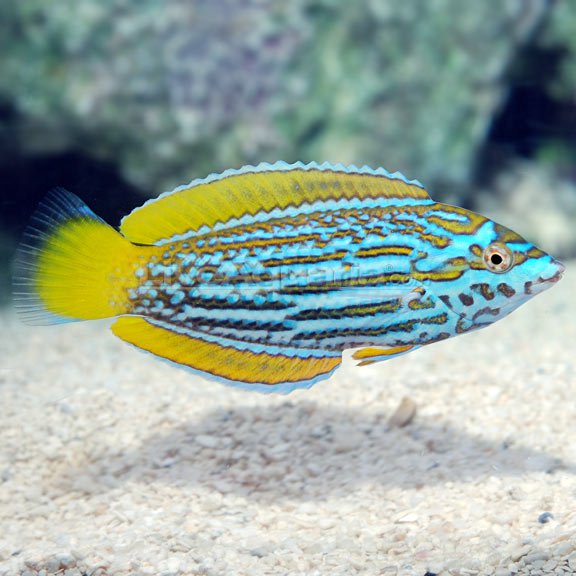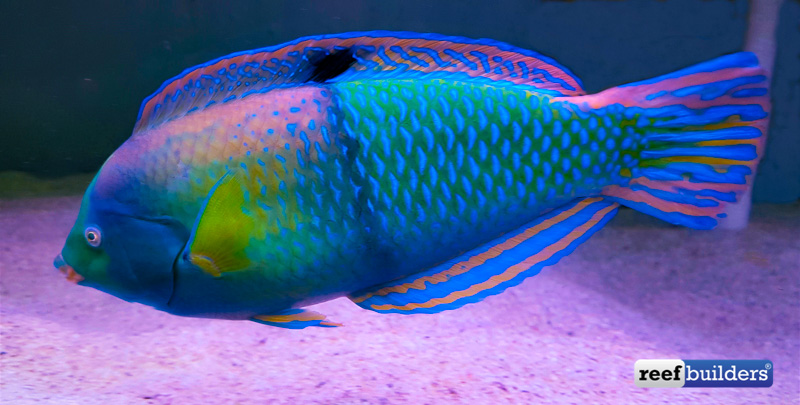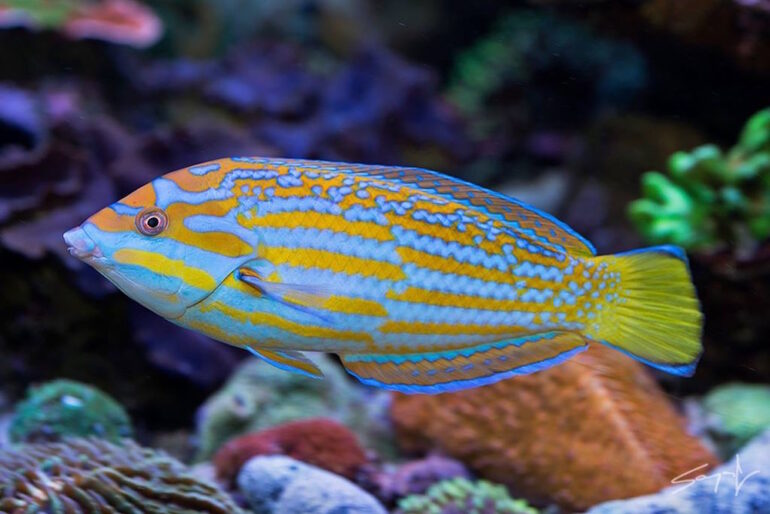Ask someone to assemble a list of dream reef fish and this next species will most likely be on it. Anampses lennardi, aka the Blue and Yellow Wrasse, Lennard’s Wrasse, or simply Lennardi Wrasse, would already be wrasse royalty just by way of the genus it belongs to, but its exclusivity has made it one of the most sought-after and highly-priced wrasses of all.
Described in 1959, Anampses lennardi hails from the Eastern Indian Ocean, off Western Australia, where it’s found in the surge zone up to 24m/79′ deep. It occurs over rubble substrates and buries in them at night – a prerequisite for its aquarium care. As Anampses go the Lennardi is large, and fully grown at nearly 12” in length. It’s also a super active fish, careering up and down the full length of large aquariums and always on the lookout for food.

Due to its size and activity, it requires aquariums of at least 250 gallons, and it will navigate high-flow areas with ease. We are lucky enough to have worked with several individuals, and they are imported at sizes as small as 2”. As juveniles, they have a dark, almost black body coloration with yellow dorsal and caudal fins, and metallic turquoise longitudinal stripes, but as they grow the pattern becomes more navy and then blue and yellow and they are most often seen around the 6” mark with that recognizable blue and yellow, female patterning.
Imports have been sporadic since their introduction to the hobby in 2010, and it wasn’t until 2018 that we saw what a full-grown super male looked like, and we weren’t disappointed! Lennardi are truly trophy fish for those who can afford them.

Having worked with several sizes we prefer them at the 6” mark, and then we would even describe them as hardy. At 2” they can take to the sand and you risk not seeing them for days. We’ve even had a juvenile jump out, so they must have tight-fitting lids to avoid very costly accidents.
We recommend that they are wormed because of their substrate activities and if a Lennardi fails to gain weight, worms are the most probable cause. Their favorite foods are meaty foods with large krill being recommended. They will also take everything from Artemia to Mysis, to cockles and mussels, to chopped fish and live feeder shrimp. Depending on the size of the individual, feeds of six times per day are not excessive for this insatiable species.

Unlike some species, the Lennardi wrasse may actually increase in price with size and age. In Europe, small individuals may sell for 6-700 euros with six-inch fish commanding over €2000. In the US, expect to pay north of $2000. In public aquarium-sized tanks, they can be kept in groups and will eventually form a harem.



